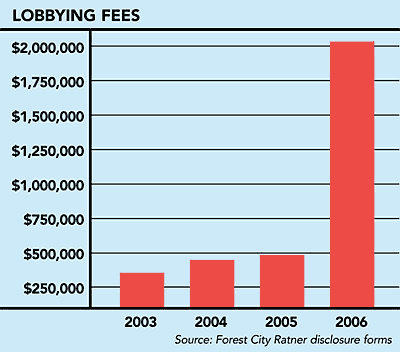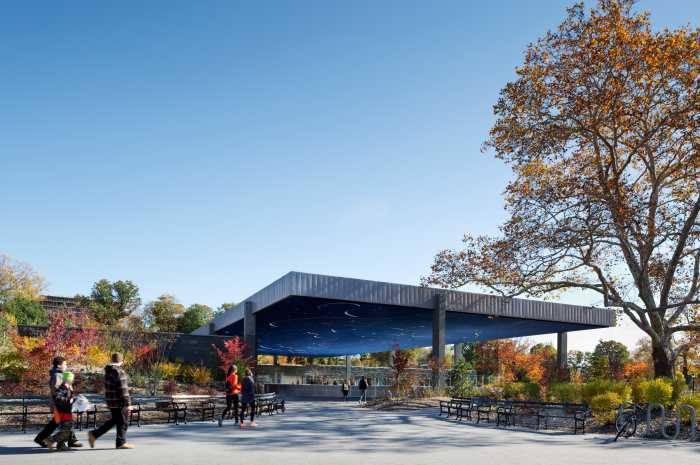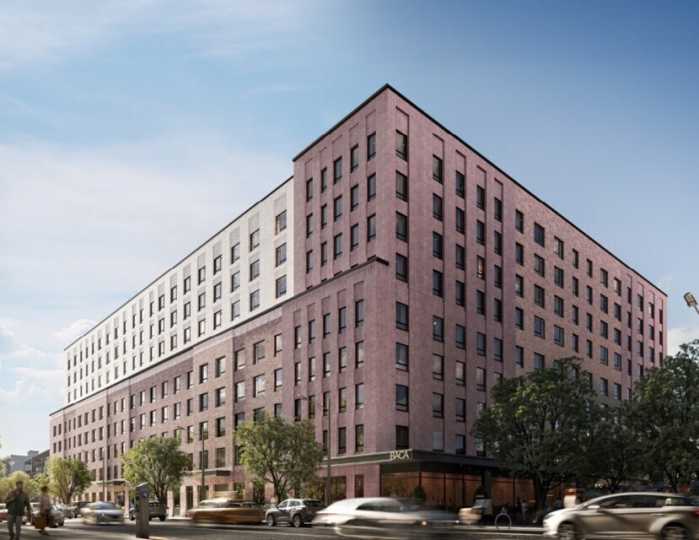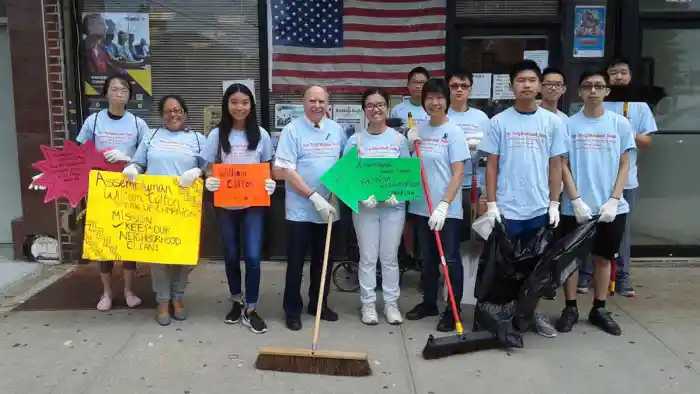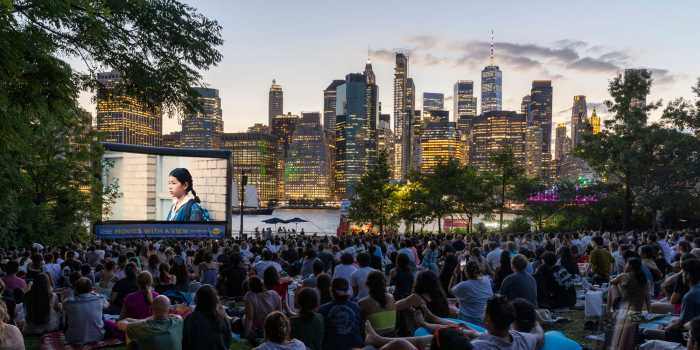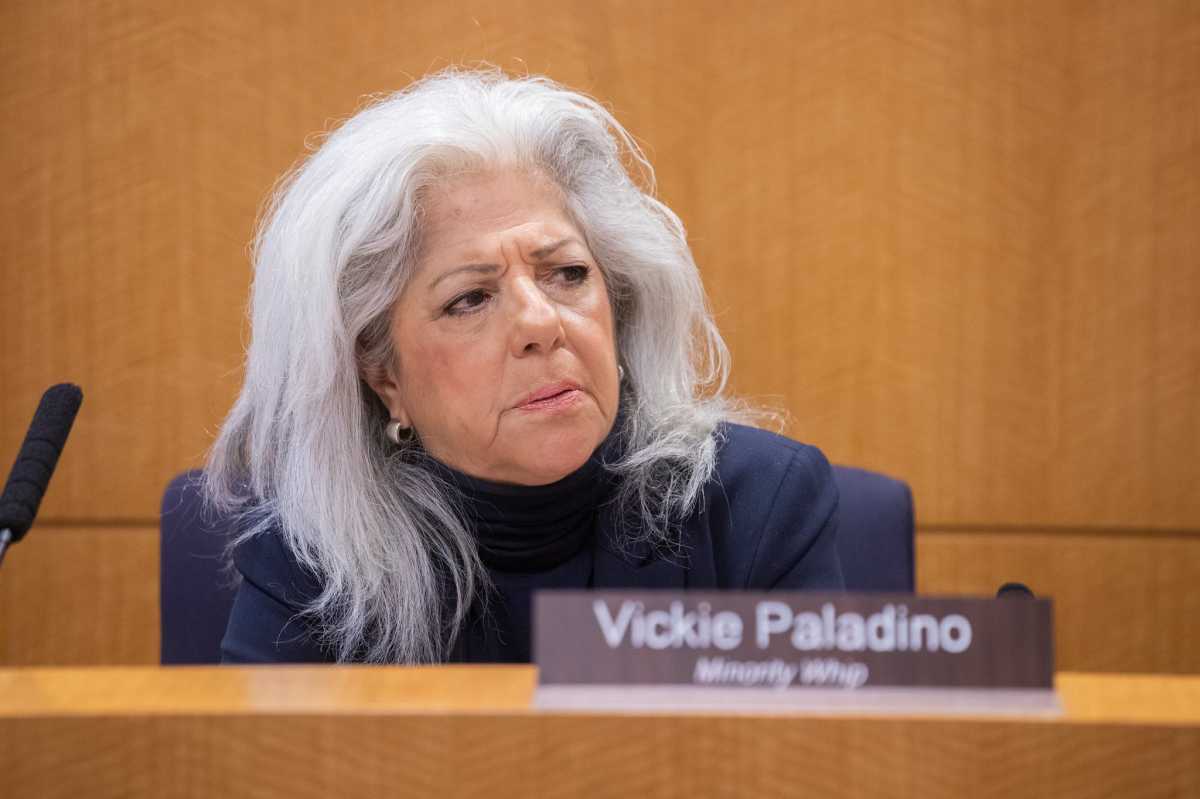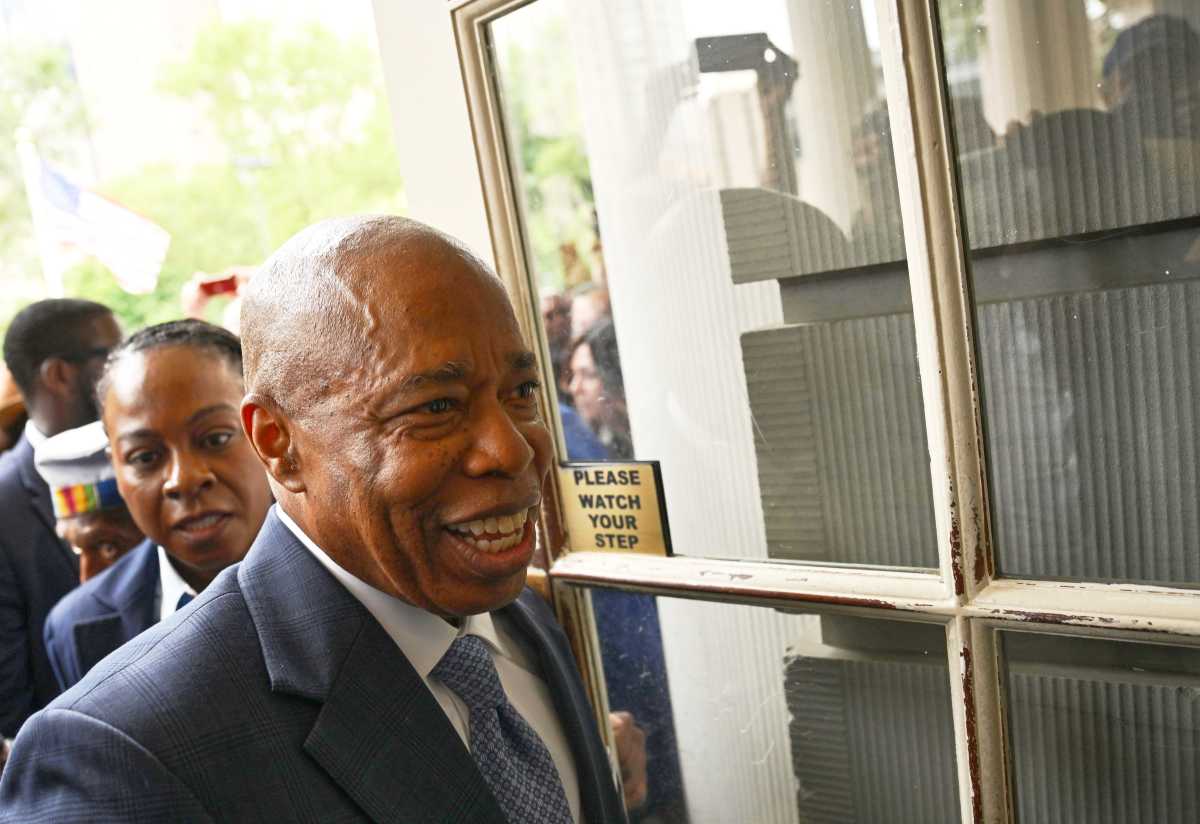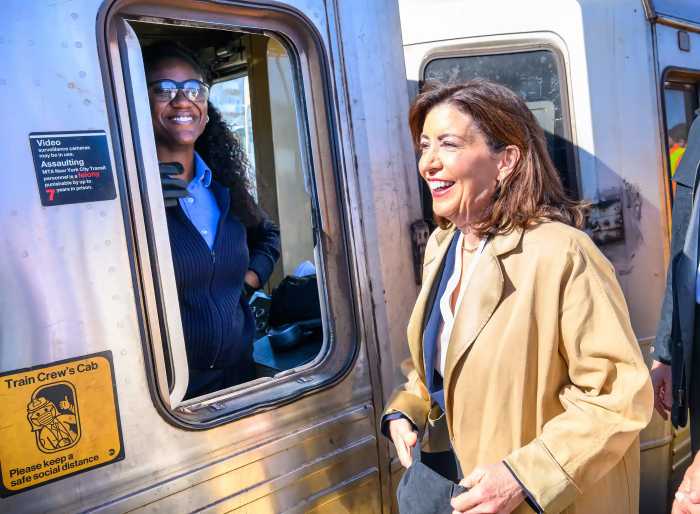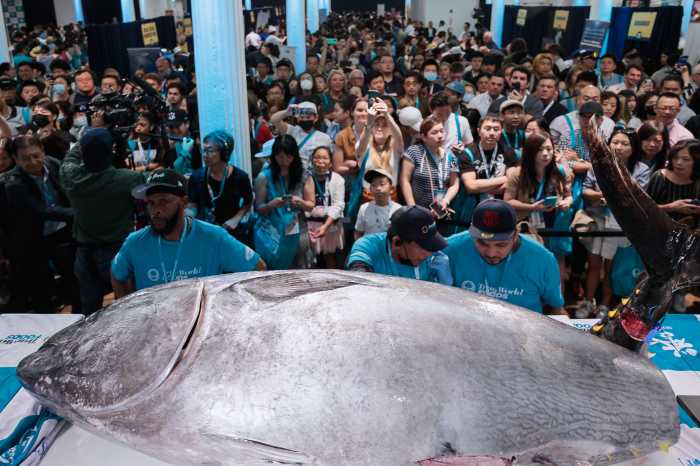Bruce Ratner spent more than $2 million to lobby state and local lawmakers last year — the year in which his Atlantic Yards project slid through the state approval process.
Ratner’s $2.105 million in lobbying expenses — the most he’s ever spent in a single year — placed him third on the state list for 2006, close behind the Healthcare Association of New York State (a consortium of insurance companies) and Verizon, the global communications giant.
The state’s lobbying overseer said he wasn’t surprised to find Ratner so high on the list last year.
“Some companies and associations always appear on the list — the teachers union, healthcare companies, civil service employees union — but when it comes to a development project, we tend to see spikes in the year that the project is going through the approval process,” said David Grandeau, executive director of New York’s Commission on Lobbying, which requires companies to register and post their lobbying expenditures twice a year.
Grandeau said the same pattern played out in 2005 when groups involved in the West Side Stadium fight poured money into Albany.
It is unclear from Ratner’s disclosure reports — posted on the Commission’s Web site this week — what he got for his $2.1 million.
The single largest expense — $1.4 million — paid salaries at his seven outside lobbying firms and his own in-house team of 41 part-time influence-makers.
The rest was spent on cellphone bills, copying, printing, supplies and thousands of dollars in charges of less than $75 that do not need to be itemized.
Behind those numbers are human beings doing the work of lobbying elected officials, experts said.
“Here is how the game is played,” said one state-registered lobbyist, one of the few who was actually not on Ratner’s payroll last year.
“They have to hire all these different lobbyists to lobby different players. If you want to talk to Shelly [Assembly Speaker Sheldon Silver], you hire Pat Lynch. If you want to lobby city government, you hire John Locicero [a former aide to Mayor Koch].”
One of the lobbyists hired by Ratner last year, Melanie Meyers, used to be general counsel at the Department of City Planning, which was first reported by the Atlantic Yards Report. Opponents of Atlantic Yards point to this hiring as evidence that Ratner was buying his way into meetings with Planning officials even as the public was barred from the limited city role in the Atlantic Yards public approval process last year.
After being lobbied by Ratner and his team, the Department of City Planning eventually negotiated a deal with Ratner that would trim the size of Atlantic Yards by eight percent — but that “cut” only brought the project down to its originally proposed size.
Another public official who shows up repeatedly as a target of Ratner’s lobbying effort is Borough President Markowitz, a strong supporter of the project.
Markowitz would not comment on what form Ratner’s lobbying took, but said through a spokesman that any meetings he had with Ratner officials involved “making Atlantic Yards work better for Brooklyn.”
Opponents, of course, claim the $4-billion mega-development can’t do that — mostly because public officials have been working for Ratner.
“Forest City Ratner had $2.11 million to lobby Albany on ‘Atlantic Yards’ but will not spend a single penny to purchase the rail yards which comprise over one-third of the development site,” said Daniel Goldstein, a spokesman for Develop Don’t Destroy Brooklyn. “Instead, New York City taxpayers will buy the yards for Ratner. It’s an exquisite shell game. … The taxpayers are being forced to pay Ratner’s bills without any say in the matter.”
Forest City Ratner did not return several calls and emails seeking comment.


